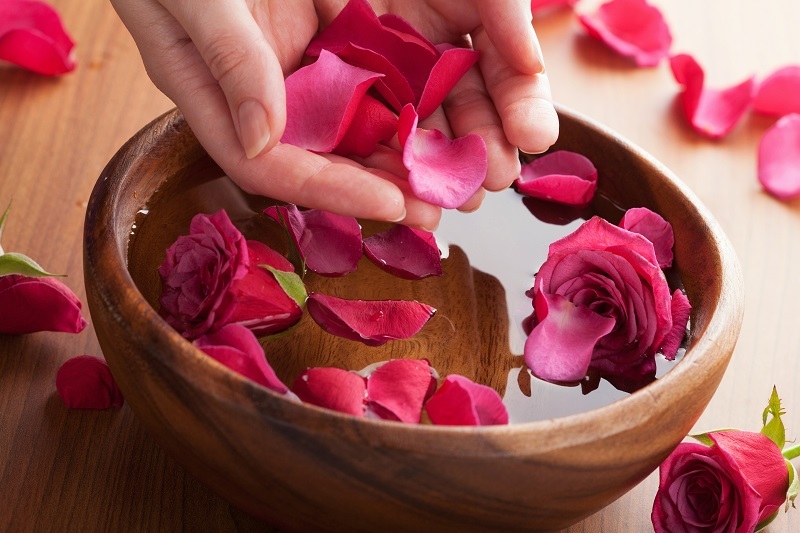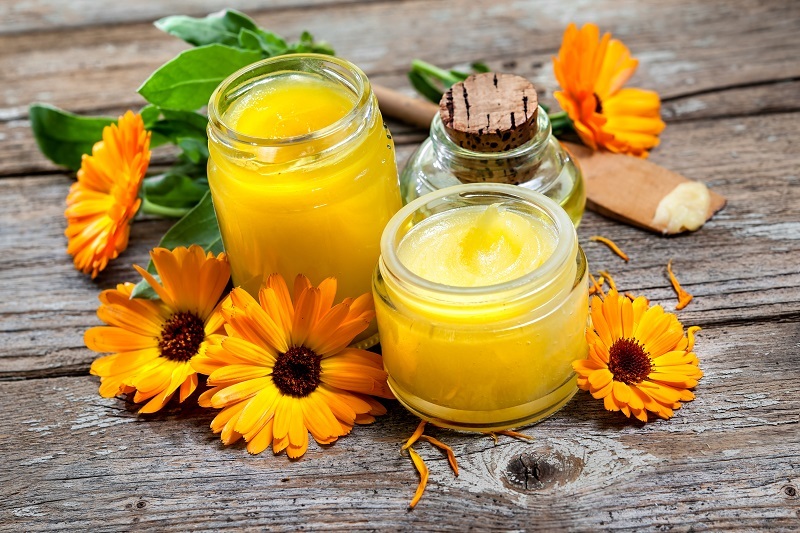Secrets to Extending the Life of Cut Flowers
Posted on 02/07/2025
Secrets to Extending the Life of Cut Flowers
Nothing brightens up a home like a bouquet of fresh cut flowers. Whether they're a heartfelt gift or a thoughtful gesture to yourself, knowing how to extend the life of cut flowers can ensure they stay beautiful and vibrant for as long as possible. Learn the expert secrets and practical tips to maximize the longevity of your floral arrangements!
Why Do Cut Flowers Fade So Quickly?
Understanding why cut flowers deteriorate is the first step to keeping them fresh. After flowers are cut, they're removed from their root system and lose their natural supply of water and nutrients. Bacteria, dehydration, and loss of energy reserves combine to cause wilting, petal dropping, and browning. That's why proper care from the moment flowers are cut is crucial.

Prepping Your Cut Flowers: The First Steps Matter
Choose Quality Flowers
- Shop Smart: Choose blooms that are just beginning to open, as fully open flowers are often near the end of their lifespan.
- Check for Freshness: Look for creaseless, firm petals and healthy green leaves. Avoid flowers with discoloration or wilting edges.
Proper Cutting Techniques
- Use Sharp Tools: Always use a clean, sharp knife or scissors to avoid squeezing and damaging the stems.
- Cut Underwater: This prevents air bubbles from blocking the water uptake channels in the stems.
- Angle the Cut: Cut the stems at a 45-degree angle to increase surface area and promote better water absorption.
- Remove Lower Leaves: Any leaves that will sit below the water line should be stripped to prevent bacterial growth.
The way you prepare flowers before they go into the vase greatly impacts their longevity.
Secrets to Keeping Cut Flowers Fresh Longer
Choose the Right Vase
- Cleanliness is Key: Always use a thoroughly cleaned vase. Residues from previous arrangements can harbor bacteria that shorten flower life.
- Right Size: Ensure the vase is large enough so stems are not crowded, allowing for adequate airflow.
The Importance of Water
- Fresh, Cool Water: Fill the vase with fresh, room-temperature water. Cold water can shock some flowers, while hot water can accelerate wilting.
- Daily Change: Change the water every one to two days to prevent bacterial buildup. Clean the vase each time for maximum freshness.
- Monitor Water Level: Some flowers drink a lot; check and refill water daily.
Use Flower Food or Home Remedies
- Commercial Flower Food: Contains ingredients to fight bacteria, provide nutrients, and regulate water pH.
- DIY Home Solutions:
- Sugar: Provides food for the flowers.
- Bleach: A few drops fight bacteria.
- Lemon Juice or Vinegar: Acidifies the water to help water move up the stems.
- Recipe: Add 2 tbsp of lemon juice (or 2 tbsp vinegar), 1 tbsp sugar, and 1/2 tsp bleach to a quart of water for a balanced homemade mix.
- Aspirin: Some claim a crushed aspirin tablet in the water can help extend the freshness of flowers.
Keep Flowers Hydrated
- Avoid Rapid Temperature Swings: Extreme hot or cold temperatures can stress cut flowers.
- Direct Sunlight and Heat: Display arrangements out of direct sunlight, away from heat sources, and drafts, as these conditions can cause water to evaporate and accelerate wilting.
- Refrigeration Overnight: Florists often refrigerate arrangements overnight to slow down the metabolic processes that cause wilting. If possible, place your flowers in the fridge overnight for maximum longevity.
Proven Tips for Specific Flower Types
Tough Stems (Roses, Lilies, Tulips)
- Remove Thorns: For roses, carefully remove thorns to prevent bacteria collecting around the wounds.
- Re-cut Stems: These flowers thrive when their stems are re-cut every few days to prevent microbial blockage.
- Ethylene Gas: Don't store near fruit (especially apples and bananas) which emit ethylene gas known to speed up aging.
Woody Stems (Lilac, Hydrangea, Forsythia)
- Split Stems: Make a vertical cut at the stem tips to allow better water absorption.
- Hot Water Treatment: Dip the trimmed stems into boiling water briefly (about 30 seconds) to seal sap and help draw water upwards.
Mild Stems (Daffodils, Zinnias, Poppies)
- Secrete Sap: Daffodils in particular release a sap that can shorten the life of other flowers. Condition them separately for a few hours before adding to mixed arrangements.
- Flame the Ends: For poppies, lightly searing the cut ends stops the sap flow and can improve water uptake.
Handling and Display: Extra Tricks for Maximum Freshness
Keep Your Arrangement Clean
- Prune Faded Blooms: Regularly remove wilted or dead flowers to prevent them from producing ethylene gas that can age neighboring blooms.
- Groom Daily: Check for fallen leaves or petals in the water and remove daily.
Avoid Ripening Fruit
- Steer Clear of Fruit Bowls: As noted above, many ripening fruits release ethylene gas, which is notorious for shortening the vase life of fresh flowers.
The Right Environment
- Shade Over Sun: Cut flowers last longer in a cool, shaded place rather than direct sunlit windowsills.
- Away from Appliances: Keep arrangements away from TV sets, computers, and radiators, which emit heat that can dry flowers quickly.
Re-Cutting Stems
- Every Few Days: Trim a half inch off the bottom of each stem every 2-3 days, immediately after removing from the vase and under running water, to rejuvenate water uptake ability.
Common Mistakes That Shorten the Life of Cut Flowers
- Neglecting the Water: Letting water run low or get muddy accelerates decay due to rising bacteria counts.
- Cramming Stems: Overcrowded vases not only cause wilting due to lack of airflow but also encourage rot as petals and leaves touch the water.
- Forgetting Flower Food: It's easy to forget, but floral preservative goes a long way towards providing the nutrients flowers miss once they've been cut.
Natural Approaches to Extending the Life of Fresh Cut Flowers
- Avoid Chemicals: Try homemade recipes with lemon juice, sugar, or vinegar as described above for a more natural approach.
- Use Copper Coins: Some people swear by dropping a penny into the vase, as copper acts as a fungicide and can slow bacteria growth.
- Vodka or Gin: Tiny amounts (a few drops to a tablespoon) can work as antibacterial agents and slow wilting.

Frequently Asked Questions About Prolonging the Life of Cut Flowers
Can I use household bleach to make cut flowers last longer?
Yes! In very small amounts ( 1/4 tsp per quart), bleach can help control bacteria. Always dilute well and avoid overuse, as too much can harm delicate stems.
What if my flowers start to wilt early?
Remove the flowers, re-cut their stems under water, clean the vase, and replace the water and flower food. Some flowers will revive--especially if done promptly.
Do cut flowers need sunlight?
After being cut, flowers do not need direct sunlight (which can shorten their life), but they still benefit from a well-lit room. Avoid direct rays or placing them on hot windowsills.
How often should I replace the water?
Every 1-2 days is ideal. Clean the vase and re-cut stems to keep blooms fresh and help them drink more efficiently.
Should I re-cut the stems every time I change the water?
Yes--a fresh cut exposes unblocked tissue, allowing the flowers to absorb more water.
Are there any flowers that naturally last longer as cut flowers?
- Chrysanthemums
- Carnations
- Alstroemeria (Peruvian lily)
- Orchids
- Gladiolus
These flower varieties tend to outlast more delicate options.
Final Thoughts: Master the Life Extension of Your Bouquets
With consistent care and a few insider tricks, your cut flower arrangements can easily stay fresh and beautiful far beyond the average vase life. Whether it's taking the time to properly prepare stems, refreshing the water regularly, or making use of simple home remedies to fight bacteria, every step you take matters.
Take pride in knowing these secrets to prolonging the life of cut flowers, and enjoy their color, fragrance, and charm in your home for many days to come!
- Quick Recap of Proven Steps to Extend the Life of Cut Flowers
- Choose and prep flowers wisely
- Always use clean tools and vases
- Change water and trim stems every 1-2 days
- Use flower food, homemade remedies, or both
- Keep flowers away from fruit and excessive heat
- Prune wilted blooms to keep arrangements fresh
By following these flower care secrets, you can master the art of making fresh cut flowers last longer and enjoy their presence in your life -- every petal of the way.





